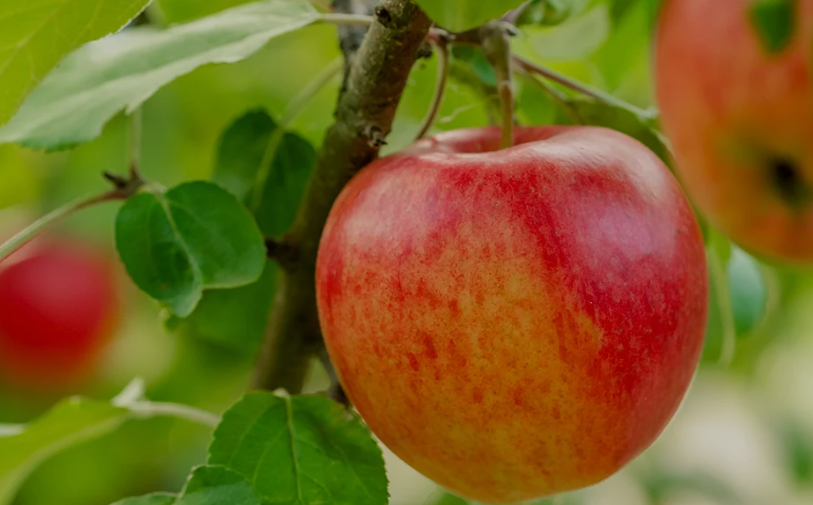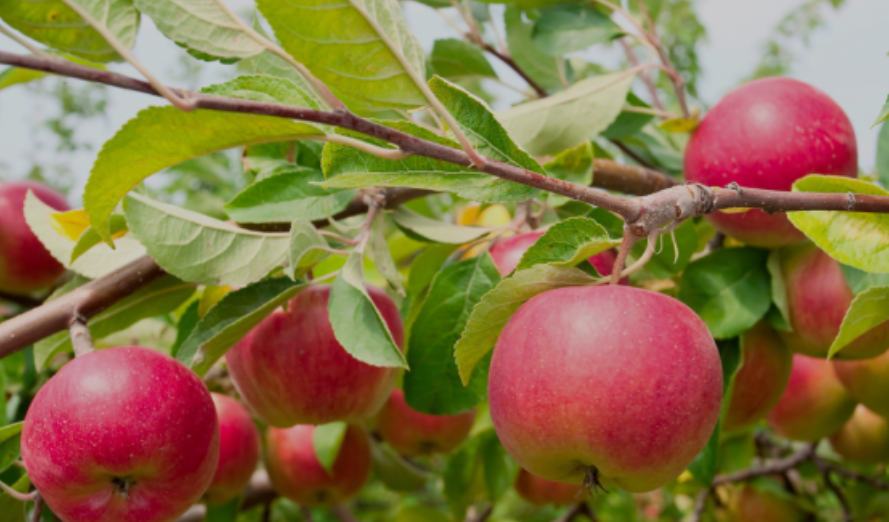
Pome fruits are a distinct type of fleshy fruit characterized by a central core containing seeds, surrounded by a tough membrane and an edible outer layer. They belong primarily to the Rosaceae family, which includes apples, pears, and several less common species like medlars and quinces. This unique structure differentiates pome fruits from other fruit types such as drupes or berries, giving them a firm texture and a balance of sweetness and acidity that makes them versatile in culinary applications.
One of the most familiar pome fruits is the apple (Malus domestica), cultivated in thousands of varieties worldwide. Apples are enjoyed fresh, baked, juiced, or processed into sauces, ciders, and preserves. Pears, another popular pome, are valued for their tender, juicy flesh and delicate sweetness. Subtropical and temperate regions alike cultivate these fruits extensively, reflecting their adaptability to different climates and soil types.
Pome fruits are rich in vitamins, minerals, and dietary fiber, making them a healthy addition to diets. They are particularly noted for their high vitamin C content, antioxidants, and phytonutrients, which help support heart health, digestion, and immune function. The firm flesh and skin of many pome fruits, such as apples and pears, also provide fiber, promoting a feeling of fullness and supporting healthy digestion.
Culinary uses of pome fruits are diverse. They can be consumed fresh, cooked, baked, or fermented into beverages. Quinces and medlars, for example, are typically too tart or firm to eat raw and are best cooked into jams, jellies, or desserts. Pome fruits are also used in pies, tarts, salads, sauces, and beverages, demonstrating their versatility and widespread appeal. In some cultures, specific pome fruits hold symbolic or traditional significance, appearing in rituals, festivals, and folklore.
Geographically, pome fruits are cultivated across temperate and subtropical zones. Apples and pears dominate orchards in North America, Europe, and parts of Asia, while loquats, medlars, and certain pear varieties thrive in warmer climates. Wild species, such as crabapples and serviceberries, often grow in forests and mountains, contributing to biodiversity and serving as food for wildlife. Their adaptability has made them a staple in both commercial agriculture and home gardens.

Pome Fruits
Apple (Malus domestica)
Perhaps the most well-known pome fruit, apples come in thousands of varieties with flavors ranging from sweet to tart. They are eaten fresh, baked, juiced, or made into sauces, cider, and preserves.
Pear (Pyrus communis)
Pears have a soft, juicy flesh and a delicate sweetness. Varieties include European pears, Asian pears, and more aromatic types like Bartlett and Bosc. Pears are eaten fresh, canned, or poached in desserts.
Quince (Cydonia oblonga)
Quinces are aromatic and firm, usually too tart to eat raw. They are often cooked into jams, jellies, or baked desserts, where their fragrance and pectin-rich flesh shine.
Loquat (Eriobotrya japonica)
A subtropical pome fruit, loquats are small and golden-orange with a tangy-sweet flavor. They are eaten fresh or used in jams, jellies, and liqueurs.
Medlar (Mespilus germanica)
An ancient pome fruit, medlars require bletting (softening after harvest) before consumption. Their sweet, spiced flesh is eaten fresh, baked, or made into preserves.
Crabapple (Malus spp.)
Smaller and more tart than regular apples, crabapples are mostly used for jams, jellies, cider, and ornamental purposes. Some varieties are also eaten fresh when ripe.
Asian Pear (Pyrus pyrifolia)
These pears are rounder and crisp, often likened to apples in texture. They are popular in East Asia and are eaten fresh, juiced, or used in salads and desserts.
Nashi Pear
Another variety of Asian pear, Nashi pears are juicy, crunchy, and sweet. They are often consumed fresh and are ideal for salads, desserts, and fruit platters.
Serviceberry (Amelanchier spp.)
A small pome fruit native to North America, serviceberries are sweet and used fresh, dried, or in pies, jams, and jellies. They resemble tiny blueberries but belong to the pome family.
Choke Pear (Pyrus spp.)
These wild pears are extremely astringent when raw but can be processed into jellies, preserves, and fermented beverages. They have historical culinary uses in many European regions.
Sorbus / Mountain Ash Berries (Sorbus aucuparia)
Technically pome fruits, these bright orange-red berries are tart and bitter raw but are used in jams, jellies, and liquors. They are also important for wildlife.
Loquat Pear Hybrids
These are cultivated varieties crossing loquats with pears, combining the tangy sweetness of loquats with the texture of pears. They are eaten fresh or used in preserves and jams.
Aronia (Chokeberry) (Aronia melanocarpa)
Native to North America, aronia berries are small, dark, and highly astringent. While tart raw, they are excellent for juices, jams, and nutritional supplements due to their high antioxidant content.
Wild Apple (Malus sylvestris)
Also known as European crabapple, these wild apples are smaller and more tart than cultivated varieties. They are often used in preserves, cider, and ornamental plantings.
Pearberry (Pyrus nivalis)
A wild pear species native to Europe and Asia, pearberries are small and hard but can be cooked into jams, jellies, or compotes once softened.
Indian Hawthorn Fruit (Rhaphiolepis indica)
A small pome-like fruit produced by the ornamental Indian hawthorn shrub. While mostly ornamental, the berries are occasionally used in preserves in local regions.
Wild Pear (Pyrus elaeagnifolia)
Found in Europe and the Middle East, this wild pear is small, hard, and astringent. It is usually processed into jams, preserves, or fermented beverages.
Callery Pear (Pyrus calleryana)
Also called Bradford pear, it is widely planted as an ornamental tree. The small pome fruits are bitter but can be made into preserves or used to feed wildlife.
Japanese Medlar (Eriobotrya japonica var.)
A variety closely related to loquat, these medlars are sweet and aromatic. They are eaten fresh or processed into jams, jellies, and desserts.
Saskatoon Berry (Amelanchier alnifolia)
Native to North America, this small, sweet pome fruit resembles blueberries. It is used fresh, dried, or in pies, jams, wines, and syrups.
European Medlar (Mespilus germanica var.)
A cultivated variant of the classic medlar, requiring bletting before consumption. It is often used in jellies, preserves, or baked goods.
Wild Service Tree Fruit (Sorbus domestica)
Also called cormier, these fruits are large pome berries, hard and astringent when raw but sweeten with ripening. They are used in jams, brandies, or eaten fresh when fully ripe.
Crataegus / Hawthorn Fruit (Crataegus spp.)
These small, apple-like pomes are often tart and used in jams, jellies, sauces, and traditional herbal remedies for heart health.
Chinese White Pear (Pyrus bretschneideri)
Native to China, these pears are crisp, juicy, and sweet with a delicate fragrance. They are eaten fresh, juiced, or included in desserts and salads.